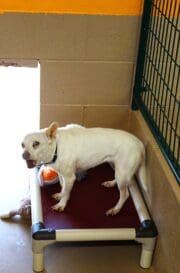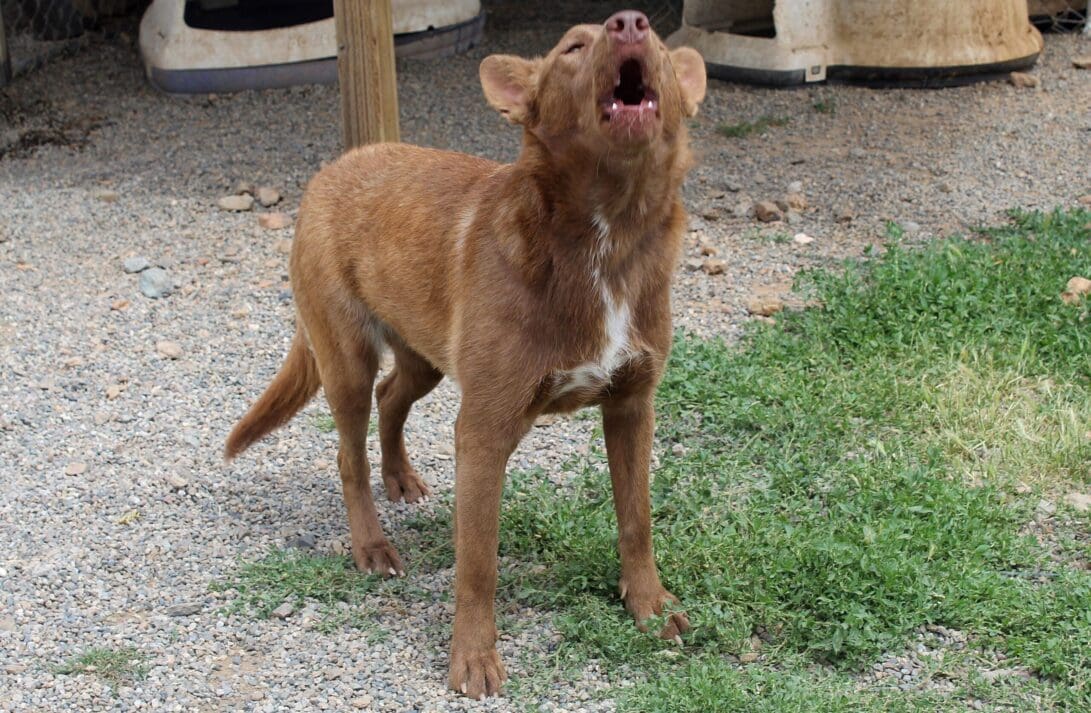We’ve all experienced it. You’re enjoying a peaceful stroll when a dog suddenly dashes up to the nearest fence, warning you away. Or, you’re sipping a quiet cup of coffee and your own pooch begins to bellow at somebody passing down the street. Barking behind a barrier is so common that many dog owners accept it as inevitable. Understanding canine psychology, however, can shed some light on this behavior and help you calm even the most reactive dog.
A fence reactive dog is a good dog under barrier stress
Dogs live in a human world full of concepts they don’t understand. They find fences, windows, and doors frustrating because they can see, hear, even smell whoever’s on the other side, but can’t freely interact with them. Most dogs who bark, snarl, or lunge behind a barrier would be calmer if they were free. In fact, highly sociable dogs are sometimes the most poorly behaved when cooped up.
Anxiety, fear, frustration, and natural instincts can cause dogs to react when their movements are restricted. In many cases, natural protectiveness or territorialism have been selected for by centuries of breeding. Dogs experience barrier frustrations every day in a home environment. Put the same animals in a crowded shelter and these stresses are exponentially worse. No wonder visitors often feel overwhelmed by all the barking! Keep in mind that kenneled dogs are reacting to their restrictions more than to the humans. Most shelter dogs behave completely differently when meeting a visitor one-on-one in a calm setting.
Helping your pooch remain calm behind a barrier
Teaching your dog good barrier manners is straightforward–all it takes is consistency and an upbeat attitude. Every time your dog reacts at the fence, window, door, or from a car, they are practicing an undesirable behavior. Help your pooch practice calmness instead.
Reducing fence reactivity
- Teach the recall (Come) command. Practice without distractions until your dog returns consistently.
- Reward your dog for returning to you.
- Once your pet is reacting, it may be too late for them to respond to you. Prevent the reaction by anticipating potential triggers.
- If necessary, clip a longline or leash to your dog’s collar and reel them in, ensuring success.
- When you can’t supervise, keep your dog away from any stressful barriers.
- Remain calm. When you’re upset, you reinforce the negative response for your pup.
Practicing good manners indoors
- It may help to block your dog’s line of sight out a window/door.
- Interrupt any barking and redirect your dog’s attention: ask them to “Sit,”and reward when they’re quiet. You can gradually extend this to “Come-Sit-Quiet,” etc.
- Your watchdog may be trying to alert you to danger. Let them see you check and show that you aren’t concerned.
- Use a cheerful, reassuring tone.
- Keep a stash of treats handy near windows/doors.
- When visitors arrive, have your dog wait quietly in another room before greeting your guests. Crate training can help.
Download this handy tip sheet published by the Austin Animal Center.



















